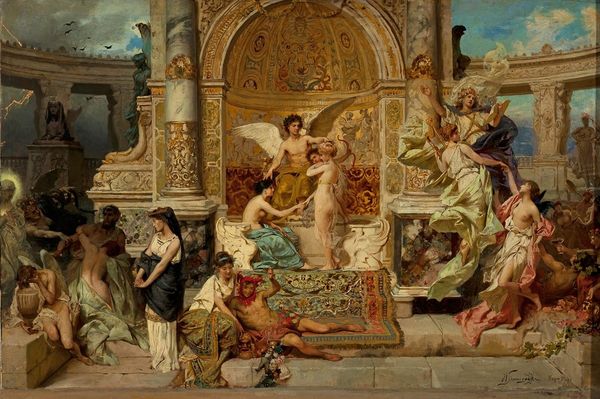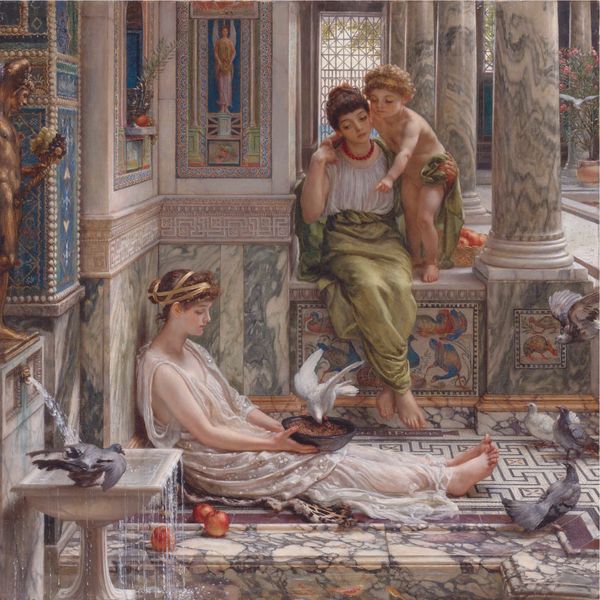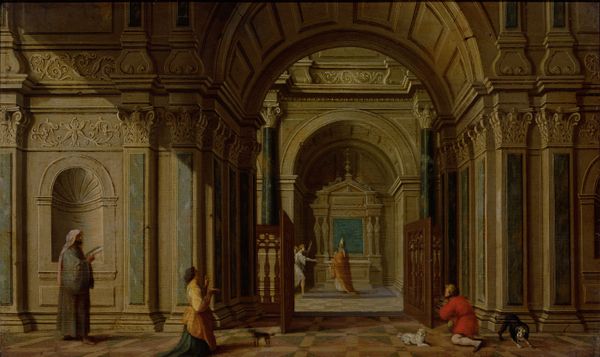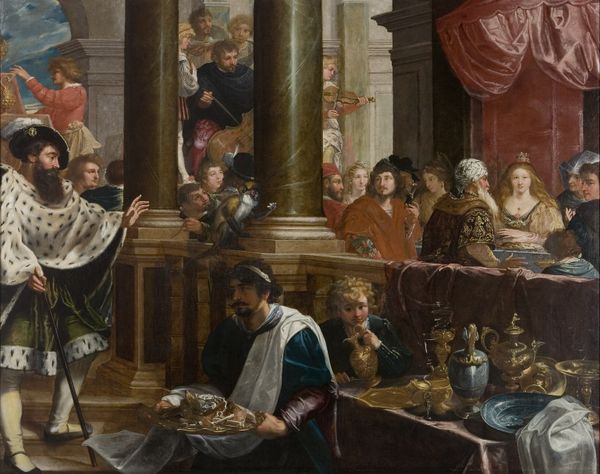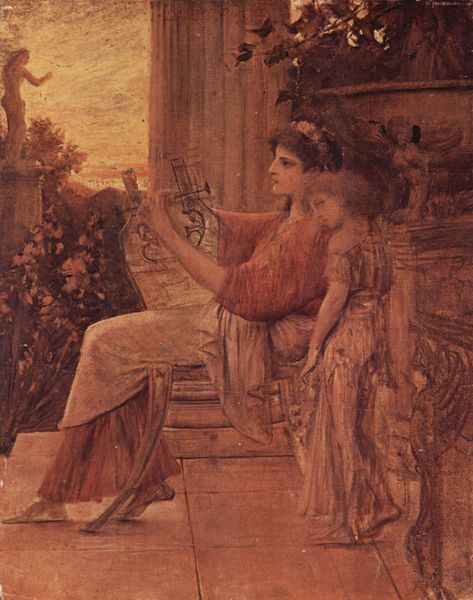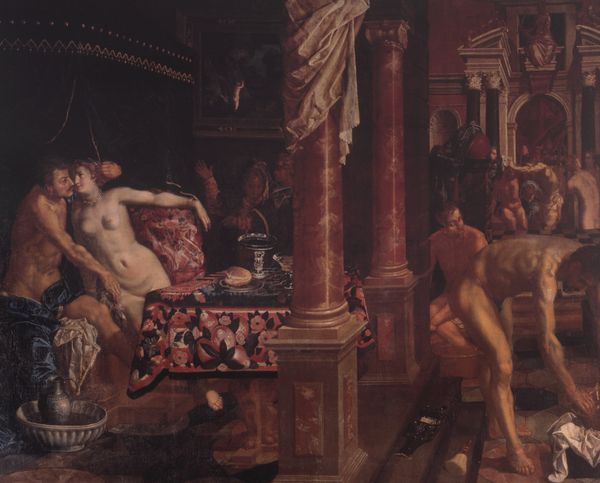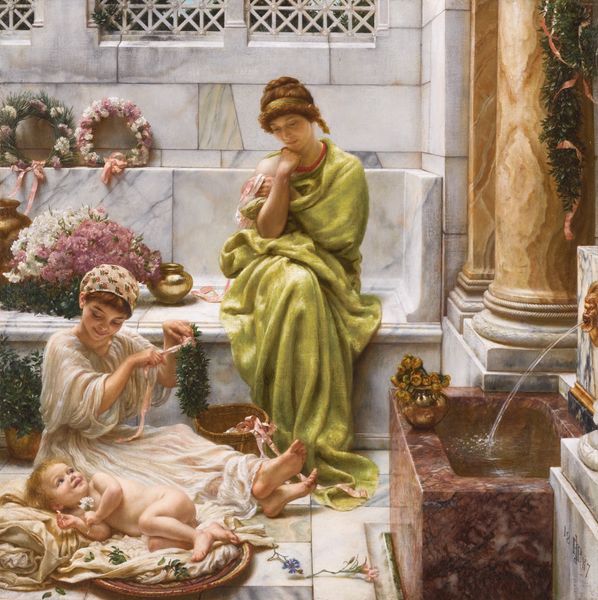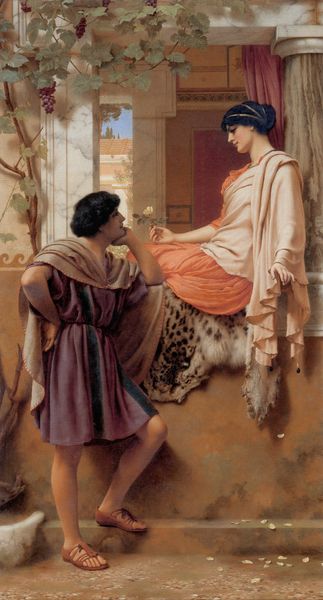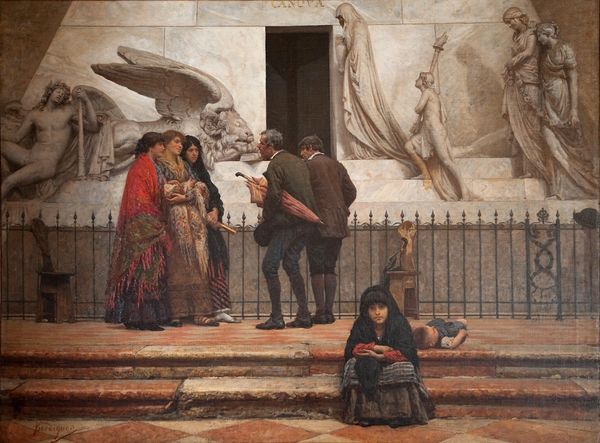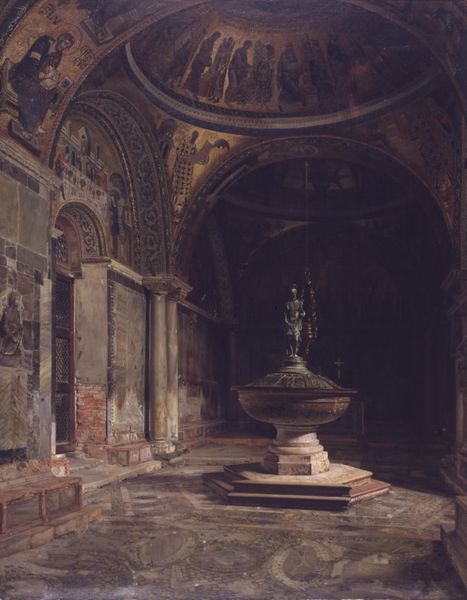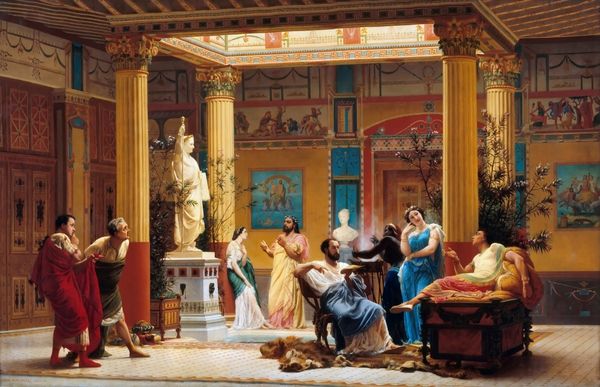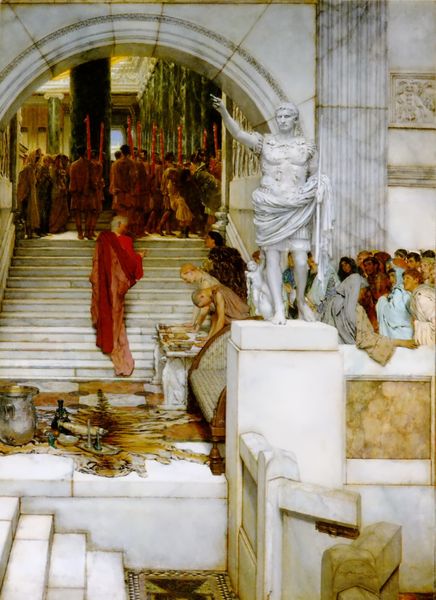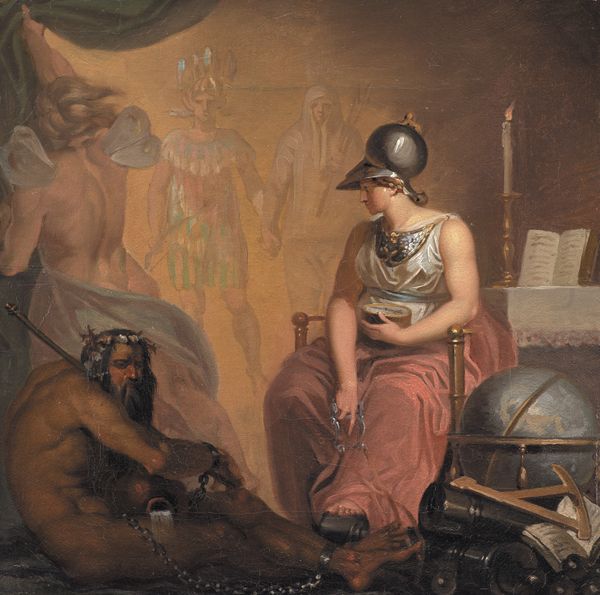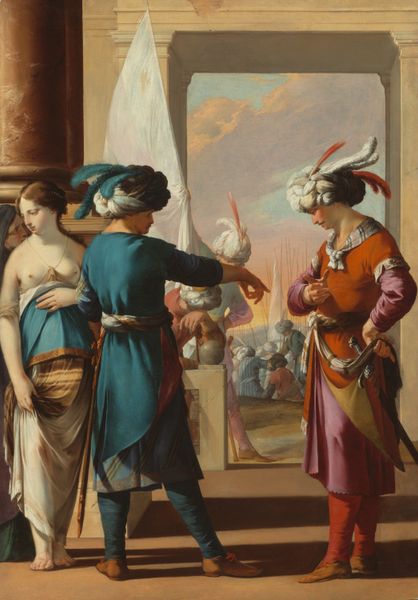
Mother with child inside the basilica of Santa Maria del Popolo in Rome 1875
0:00
0:00
noebordignon
Private Collection
painting, oil-paint
#
portrait
#
mother
#
painting
#
oil-paint
#
child
#
street photography
#
costume
#
genre-painting
#
italian-renaissance
#
realism
Dimensions: 51 x 59 cm
Copyright: Public domain
Curator: We’re looking at Noe Bordignon's 1875 painting, "Mother with child inside the basilica of Santa Maria del Popolo in Rome," currently held in a private collection. Editor: The light here is so dramatic. See how it slices across the floor, emphasizing the geometric patterns of the marble? It almost creates a stage for this intimate scene. Curator: Indeed, Bordignon’s realism is striking. Consider how he captures the mother, likely working class, and her child within this grand space. What does it suggest about the social and economic structures of 19th-century Rome? Editor: The textures are captivating—the smoothness of the marble contrasting with the fabric of her clothing. There's a visual push-and-pull between the figures and their opulent surroundings. What's the key compositional element in your opinion? Curator: To me, it's the deliberate placement of the figures in relation to the architecture. This work could be interpreted as commentary on gendered labor and motherhood amidst the backdrop of religious and patriarchal power structures, couldn't it? Editor: Or is it simply capturing the dichotomy between human existence and monumental structures? See how the geometry is used. Are those bars on the floor of light coming from a window, bars like that of a cage? Are those two caught? And why place the solitary piece of fruit near the very bottom edge of the frame? It’s as if he wants us to question the everyday against the divine. Curator: Precisely, and thinking intersectionally, Bordignon is spotlighting class, motherhood, and potentially religious constraints all at once. The artwork operates at this complex crossroads. The figures aren’t venerating what surrounds them; they appear caught, or are taking a respite. Editor: Well, whether constraint or choice, this artwork leaves a resonating impression through simple arrangement, which adds nuance, rather than just direct subject matter. Curator: Agreed, it prompts crucial questions about art’s role in representing complex social issues. Editor: Yes, and through that lens, the formal aspects take on more importance by conveying ideas we can easily explore further.
Comments
No comments
Be the first to comment and join the conversation on the ultimate creative platform.
